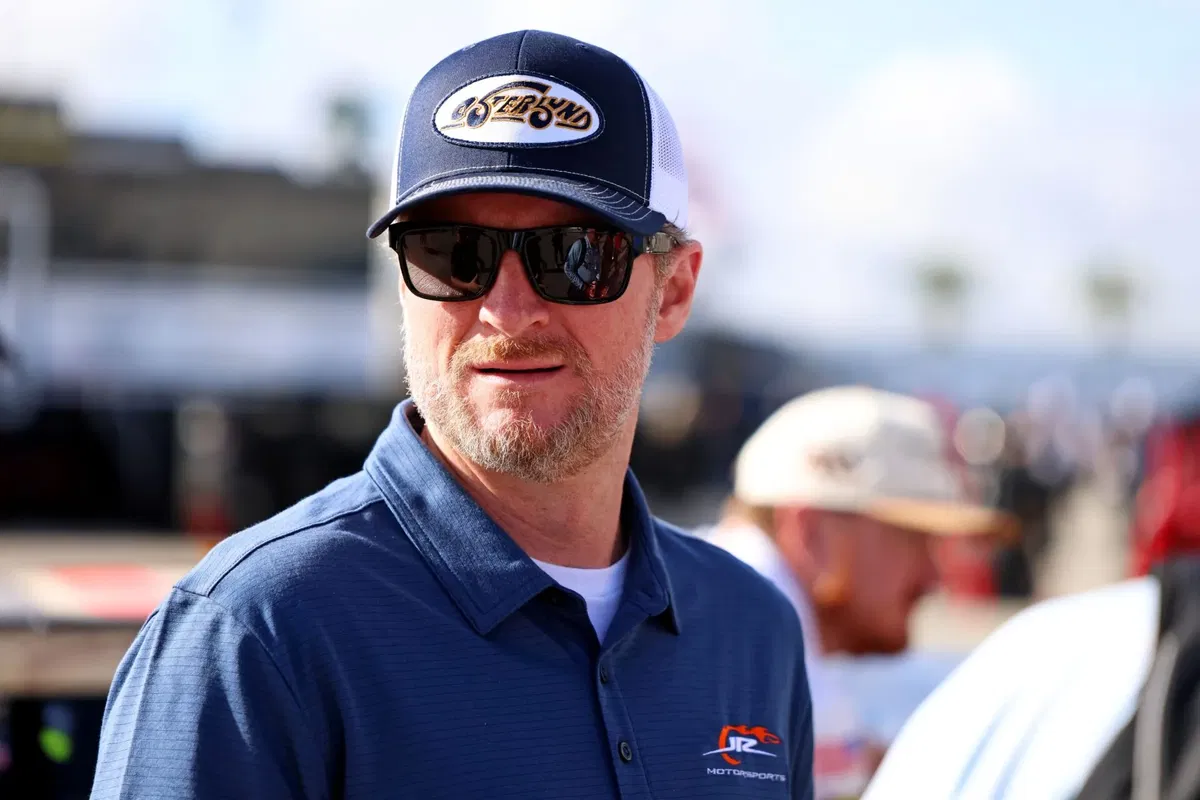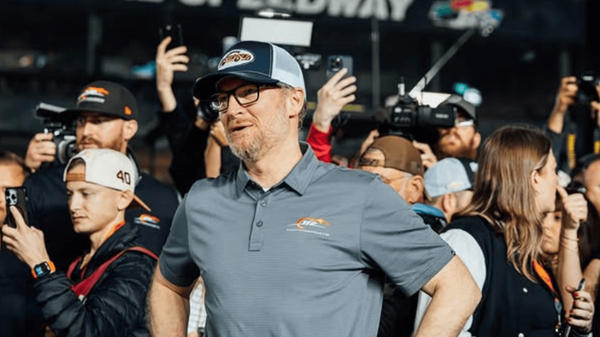
Imago
Credit: Peter Casey-Imagn Images

Imago
Credit: Peter Casey-Imagn Images
NASCAR’s Next Gen car has been a lightning rod since its 2022 debut, aiming to cut costs and boost competition with features like independent rear suspension and a spec chassis. But debates rage on, especially after recent races at tracks like Iowa Speedway exposed passing woes and limited tire wear. There’s been pushback against the car’s diffuser and low-profile tires for sometime now. The spark ignited after the August 3 Cup Series event at Iowa, where Dale Earnhardt Jr. voiced frustration on his podcast, labeling the vehicle more of an IMSA sports car than a NASCAR staple due to its modern elements.
Watch What’s Trending Now!
Kyle Petty fired back, saying, “People complained in the ’70s when they went to tubular chassis, and they complained when we went to radial tires. They’ve complained all along as the progression of the cars.” He defended the setup as a leap forward and insisted such gripes echo historical complaints over changes like tubular chassis in the 1970s. Petty, drawing from his family’s deep ties, including grandfather Lee’s era, argued the design delivers thrilling action and urged acceptance. Yet with voices clashing, one key exchange cuts to the core.
Dale Earnhardt Jr. didn’t hold back on his Dirty Mo Media podcast, pushing back against Kyle Petty’s view that the Next Gen car produces solid racing. “The car does not produce the type of racing that I think should be our standard, and I know what we’re capable of at road courses and short tracks,” he stated, emphasizing 75 years of NASCAR history as his benchmark. This stance directly counters Petty’s defense, where he claimed the setup yields “spectacular stuff on the racetrack” and dismissed critiques as unwarranted, noting evolution has always drawn complaints.
ADVERTISEMENT
Dale Jr.‘s frustration stems from aero issues in dirty air, which hamper overtakes beyond restarts, a problem amplified at venues like Watkins Glen, where Shane van Gisbergen won by over 11 seconds amid minimal passing. He elaborated on specific flaws, like underbody aero causing grip loss when drivers attempt bold moves. “If a driver wants to go down into the corner and run into the back of somebody… and move him up the track, I want them to be able to do that. You can’t now,” Jr. explained, highlighting how trailing cars slide up the track due to disrupted downforce.

Imago
source: Imago
This ties into broader criticisms since the car’s 2022 rollout, designed for parity but faulted for stifling action on short tracks, as seen in low lead changes at Bristol earlier this year. Dale Jr. disagrees with Kyle Petty‘s acceptance, insisting solutions shouldn’t rely on more restarts but on enabling passes mid-run, echoing fan outcry after Iowa’s underwhelming show.
ADVERTISEMENT
Petty’s refusal to call it a stock car, stating NASCAR hasn’t raced true ones since 1958, fuels the rift, as Jr. sees the design straying too far from heritage. “We need a car that can overtake at lap 15, lap 20, and lap 25 and not get aerotight,” Jr. urged, substantiating his point with examples like Bristol, where driver skill shone but aero limited aggression. This echoes the 1980s aero woes Petty referenced but amplifies them under Next Gen rules, where passing often vanishes post-restart, as noted in races with minimal mid-pack battles.
Dale Jr.’s rant recalls the 2007 Car of Tomorrow rollout, which faced similar backlash for altering dynamics yet evolved through tweaks, a path he implies NASCAR should pursue now. As debates over the Next Gen simmer, Dale Earnhardt Jr. shifts gears to his own racing roots. With a return to the CARS Tour on the horizon, his words carry fresh hope.
ADVERTISEMENT
Dale Jr. Eyes Cars Tour Redemption
Dale Earnhardt Jr. heads back to Anderson Motor Speedway with quiet confidence, aiming to shake off his last CARS Tour outing, where a late-race crash dropped him to 21st. “I feel good,” he shared on his podcast, signaling readiness after logging three hours of testing at the track. This doubleheader in Late Model Stock and Pro Late Model marks his second run this season in the No. 8 Budweiser ride, a nod to his storied past.
He acknowledges challenges like the new tire compound, which he calls “too durable,” limiting fall-off and strategy plays. Qualifying remains a weak spot, as Jr. admits he’s historically “terrible” at single-lap efforts, though his 15th-place start last time felt like progress. Track position will be key, he notes, given the durable rubber reduces pit-stop gambles.
ADVERTISEMENT
The throwback scheme adds emotional weight, reviving the 2001 Pepsi 400 Budweiser livery from his Daytona win shortly after his father’s passing, a poignant NASCAR moment. At 50, Jr. balances broadcasting duties with these runs, using them to stay sharp and connect with grassroots racing.
ADVERTISEMENT
ADVERTISEMENT
ADVERTISEMENT

